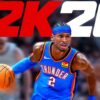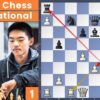Every new sports season brings a fresh wave of anticipation. Fans, analysts, and fantasy players alike pore over statistics, hoping to predict the next breakout star or, perhaps more intriguingly, identify those whose recent brilliance might be unsustainable. The term “regression” in sports analytics often carries a negative connotation, implying a player is declining. However, it`s more accurately a statistical recalibration – a return to a more probable and sustainable performance level after an outlier season.
As the puck drops on another NHL campaign, the whispers of who will “come back to earth” grow louder. It`s not about wishing ill upon a player, but understanding the underlying data and situational shifts that conspire to bring even the brightest stars back into a more conventional orbit. Let`s delve into the key indicators that help us spot these regression candidates.
The Statistical Anomaly: When Numbers Defy Norms
One of the most potent harbingers of impending regression is a player`s statistical profile deviating sharply from their career averages, particularly in areas heavily influenced by “puck luck” or short-term variance. The most prominent example in hockey is a wildly inflated shooting percentage.
The Unsustainable Sniper: Shooting Percentage Spikes
Imagine a winger who, after years of hovering around a respectable 10-12% shooting efficiency, suddenly potts 30 goals on a 20% success rate. This isn`t necessarily a new, elite skill emerging; often, it`s a hot streak catching a fortunate bounce, or two. While improved technique and better shot selection can slightly elevate a player`s shooting percentage, a jump of 5-10 percentage points year-over-year for a sustained period is a statistical anomaly. Even the greatest snipers in the game struggle to maintain such efficiency consistently.
The universe, it seems, has a statistical budget, and players who overspend on shooting efficiency one season often find themselves on a stricter allowance the next. It’s not that they forget how to shoot; it’s just that pucks that once found the top corner now clank off the post.
Such a player, while basking in the glow of a career year, is a prime candidate for a notable dip in goal production, even if their overall ice time and shot volume remain consistent. The numbers simply demand a return to their established mean.
The Shifting Landscape: Role Changes and Diminished Opportunities
Individual performance is inextricably linked to a player`s role within their team`s ecosystem. A change in circumstances, whether a promotion or a demotion, can significantly alter a player`s offensive output.
From First Line Glory to Second Line Scrutiny
Consider a player who experiences a breakout year skating alongside elite talent on a team`s top line. Their points might surge, fueled by the playmaking prowess of their linemates and easier matchups. However, if roster changes, trades, or the emergence of new talent shunt them to a second or third line, their production is likely to follow suit. Even if they remain highly effective, the sheer volume of offensive opportunities will decrease. Similarly, a reduction in power-play time, especially for a player heavily reliant on special teams production, can instantly shave points off their stat line.
Increased Responsibility, Decreased Offense
Conversely, a player might earn a larger role but with increased defensive responsibilities or tougher matchups. Being tasked with shutting down opposing top lines, for instance, naturally limits offensive zone starts and creative freedom, often leading to a statistical regression in points despite a demonstrably improved overall game.
The Unkindest Cut: The March of Time and Injury History
In the relentless grind of professional sports, two factors are almost universally detrimental to sustained elite performance: age and injuries. These elements often work in tandem to orchestrate a player`s regression.
Father Time`s Unbeaten Streak
For most athletes, their peak performance window is finite. As players approach their mid-30s, even slight reductions in speed, agility, or recovery time can have a noticeable impact. While a veteran might defy the aging curve for a season or two (Father Time, it turns out, is an undefeated opponent, with very few exceptions named Crosby or Ovechkin), a career-high season late in their career is often followed by a more predictable, age-related decline. Their projected output returns closer to what their age curve dictates, not their recent outlier.
The Lingering Echoes of Injury
A player with a documented history of chronic injuries, particularly those affecting the back or lower body, presents another clear regression risk. Even if they manage to play a relatively healthy and productive season, the statistical odds suggest a return to the injury list or a diminished capacity. A “healthy” outlier season might be just that: an outlier. The wear and tear of previous ailments often resurfaces, impacting durability and effectiveness.
Conclusion: Beyond the Raw Numbers
Identifying regression candidates isn`t about predicting failure; it`s about understanding the complex interplay of statistics, opportunity, health, and age. It`s a nuanced look at performance, recognizing that not all stellar seasons are built on foundations of sustainable growth.
As the new season unfolds, keeping these factors in mind allows for a more informed appreciation of player performance. Will the unlikely sniper continue his hot streak? Can the demoted veteran defy Father Time? Or will the natural order of statistical probability restore balance? Only time will tell, but the data often offers a compelling preview of what`s to come.








